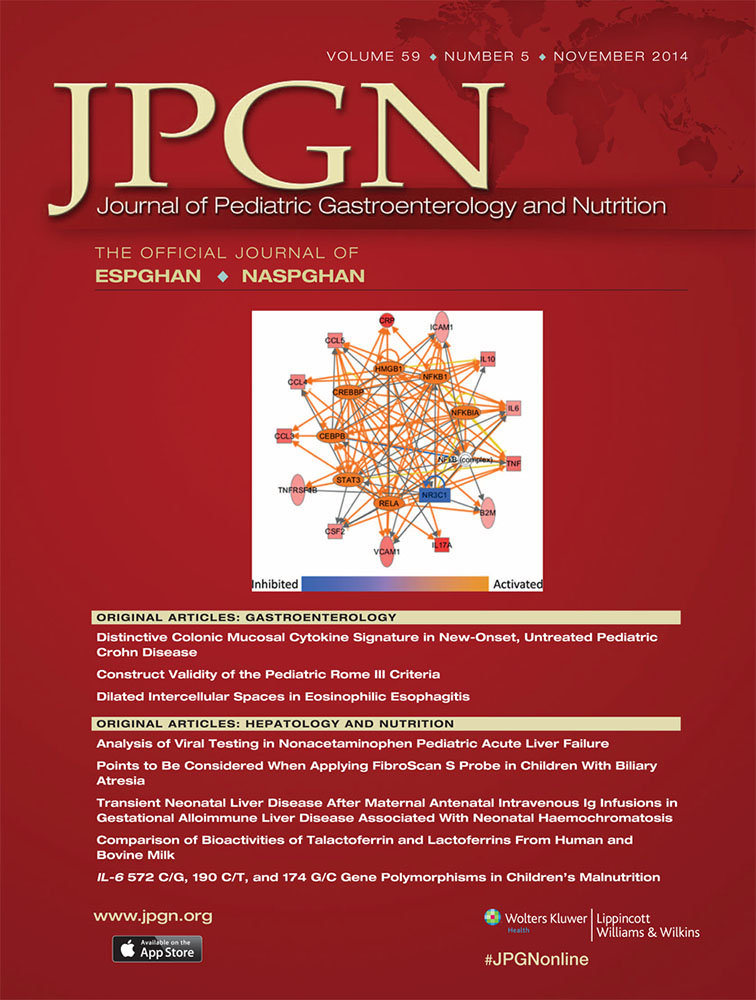Intractable Diarrhea of Infancy
10 Years of Experience
The authors report no conflicts of interest.
ABSTRACT
Objectives:
Intractable diarrhea of infancy (IDI), a group of prolonged diarrheal disorders, is difficult to diagnose and manage. We documented general features of patients and the causes of IDI.
Methods:
The present retrospective study included 60 hospitalized patients with IDI ages 0 to 24 months during January 2000 to December 2010. Detailed history, laboratory and endoscopic findings, diagnoses, and clinical courses were reviewed. Descriptive analyses were used for statistical evaluation.
Results:
The male/female ratio was 1.4. The median age at onset of diarrhea was 12 days. A total of 70% and 11% of patients were severely and moderately malnourished, respectively. Carbohydrate malabsorption (CM) and food allergies (n = 11, 18% for both) were the most frequent causes. A total of 16 of the patients (27%) did not have a specific diagnosis. The other diagnoses were infections (n = 5), immune-mediated disorders (IMD) (n = 6), congenital enterocyte defects (CED) (n = 3, 5%), short bowel syndrome (n = 2), cystic fibrosis (n = 2), intestinal pseudoobstruction (n = 1), congenital disorder of glycosylation (n = 1), abetalipoproteinemia (n = 1), and proprotein convertase (PC) 1 deficiency (n = 1). Stool calprotectin level was high in 10 of 19 patients with Crohn disease (n = 3, mean 1116 ± 851 mg/L), food allergy (n = 4, mean 516 ± 288 mg/L), and undefined etiology (n = 3, mean 616 ± 780 mg/L). The mean duration of hospitalization was 76 days.
Conclusions:
IDI is a heterogenous group of diarrheal disorders. The most frequent causes were CM and food allergies in our study. Because high levels of calprotectin support inflammation, calprotectin levels may help to discriminate CED and inflammatory causes of IDI.




